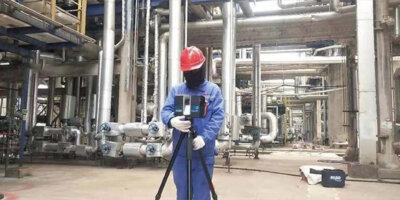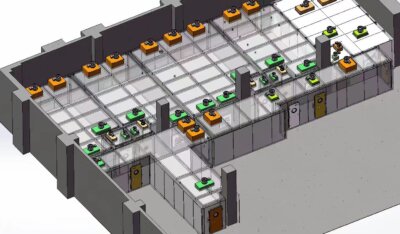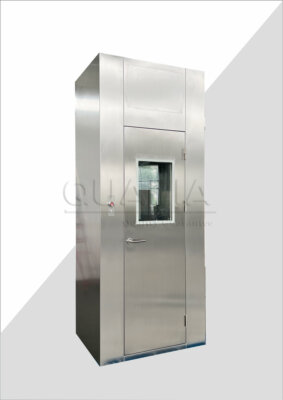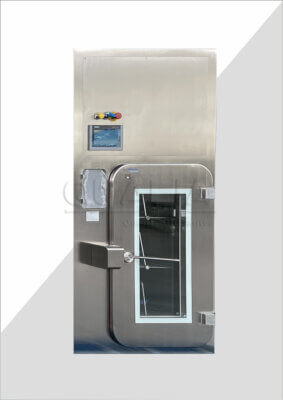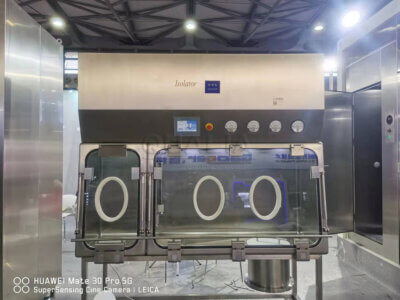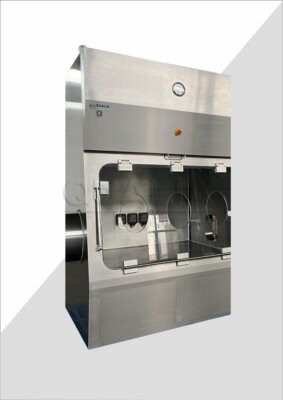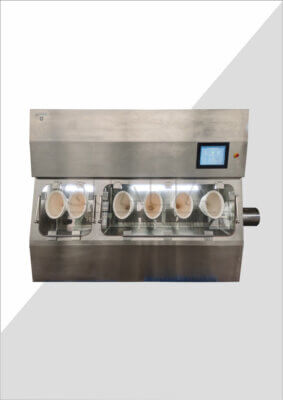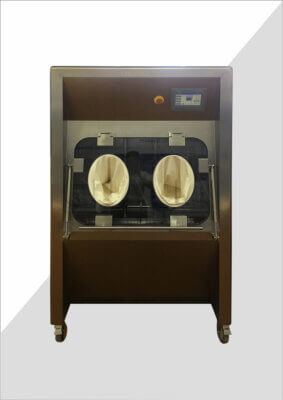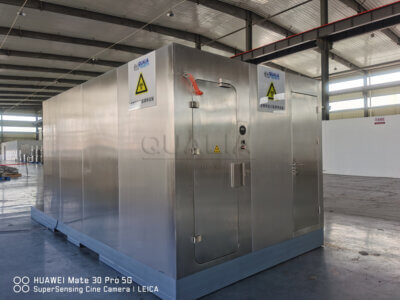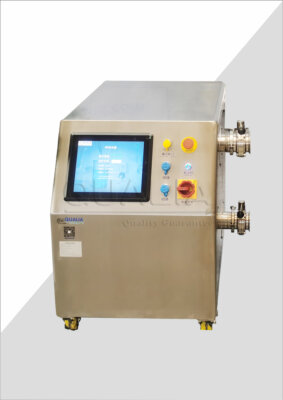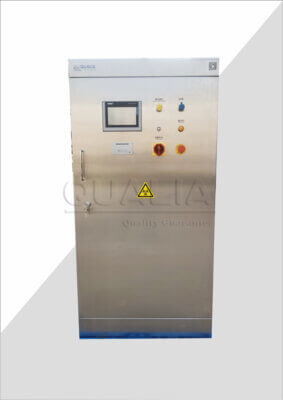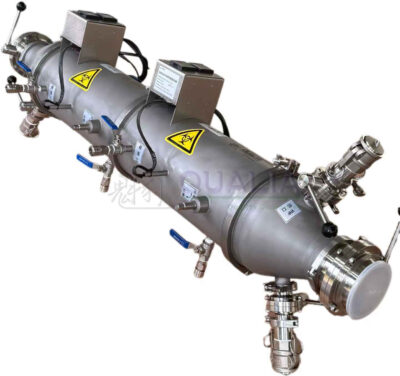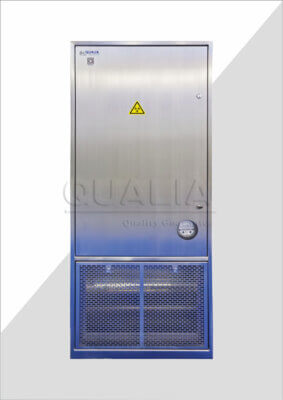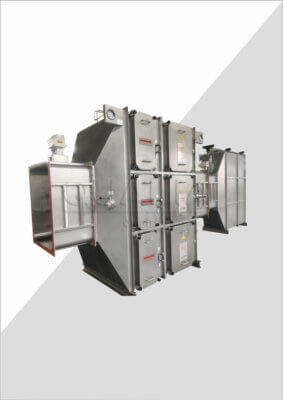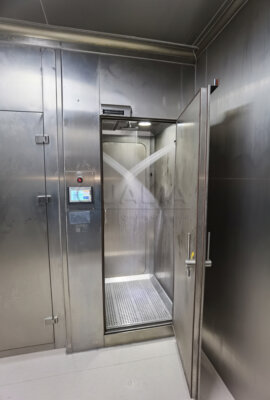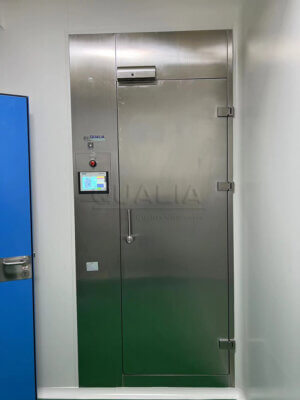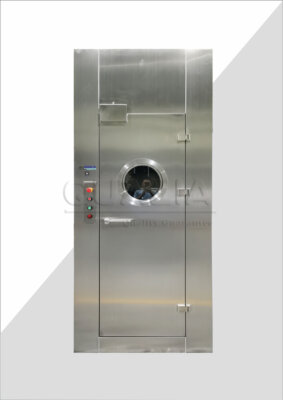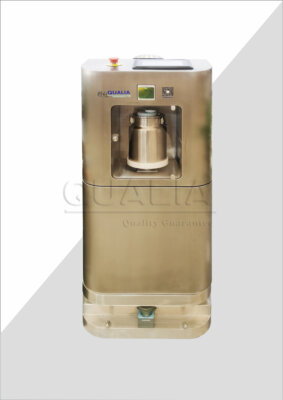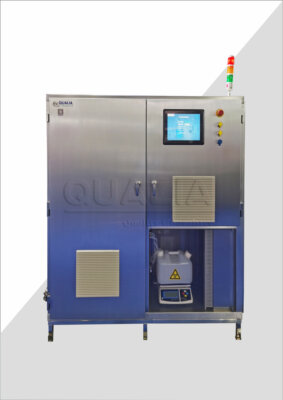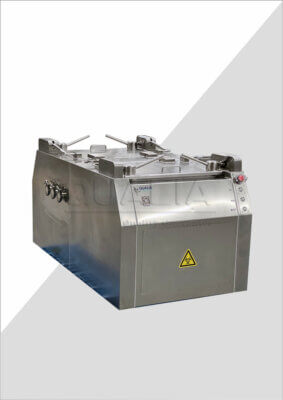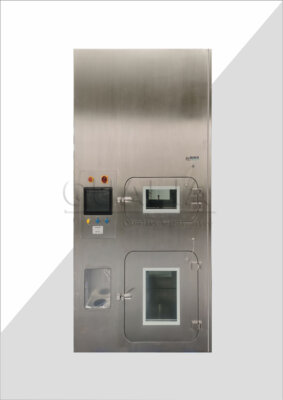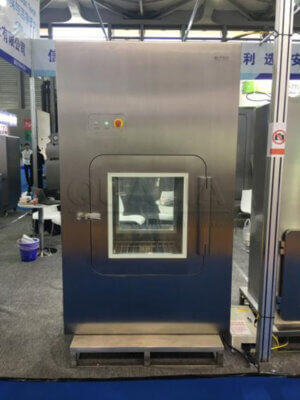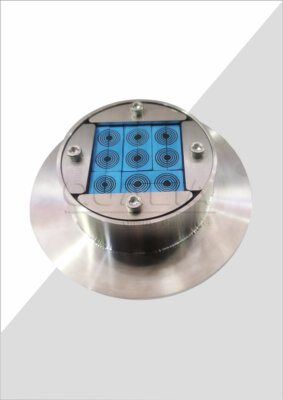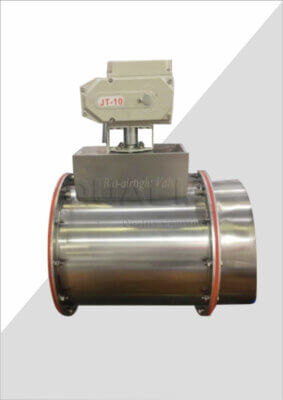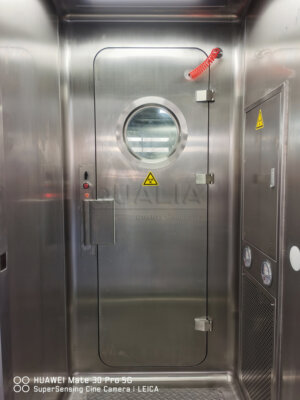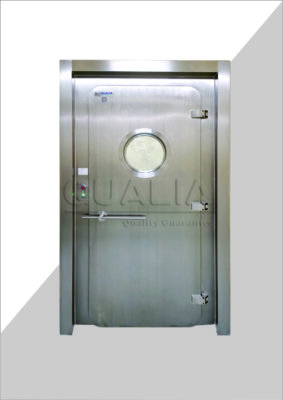In the world of effluent decontamination systems (EDS), the choice between continuous and batch processing can significantly impact operational efficiency, cost-effectiveness, and environmental compliance. As industries strive to manage liquid waste more effectively, understanding the nuances of these two processing methods becomes crucial for decision-makers and environmental engineers alike.
This article delves into the intricacies of continuous and batch processing in EDS operations, exploring their advantages, challenges, and applications. We'll examine how each method affects treatment capacity, energy consumption, and overall system performance. By the end, readers will have a comprehensive understanding of which approach might best suit their specific needs in managing liquid waste streams.
As we navigate through the complexities of EDS operations, we'll explore the factors that influence the choice between continuous and batch processing. From scalability and flexibility to maintenance requirements and regulatory compliance, each aspect plays a vital role in determining the most suitable processing method for different industries and waste streams.
"The selection between continuous and batch processing in EDS operations is not a one-size-fits-all decision. It requires careful consideration of multiple factors including waste volume, variability in composition, treatment goals, and operational constraints."
| Feature | Continuous Processing | Batch Processing |
|---|---|---|
| Operation | Uninterrupted flow | Discrete quantities |
| Capacity | Generally higher | Limited by batch size |
| Flexibility | Less adaptable to changes | More adaptable to varied waste streams |
| Energy Efficiency | Often more efficient | Can be less efficient |
| Capital Cost | Higher initial investment | Lower initial investment |
| Quality Control | In-line monitoring | Easier end-of-batch testing |
| Maintenance | Scheduled downtime required | Can be maintained between batches |
What are the fundamental differences between continuous and batch processing in EDS operations?
Continuous and batch processing represent two distinct approaches to treating liquid waste in effluent decontamination systems. At their core, these methods differ in how they handle the flow of waste through the treatment process.
Continuous processing involves a constant, uninterrupted flow of liquid waste through the treatment system. This method is characterized by its ability to handle large volumes of waste consistently over time. On the other hand, batch processing treats discrete quantities of waste in individual cycles, with each batch being processed separately from start to finish.
The choice between these methods can significantly impact the efficiency, flexibility, and overall performance of an EDS operation. Continuous processing is often favored for its ability to handle high volumes and maintain consistent treatment quality, while batch processing offers greater flexibility in dealing with varying waste compositions and volumes.
"Continuous processing in EDS operations offers the advantage of higher throughput and potentially more uniform treatment, while batch processing provides greater control over individual treatment cycles and adaptability to changing waste characteristics."
| Characteristic | Continuous Processing | Batch Processing |
|---|---|---|
| Flow Pattern | Steady, uninterrupted | Intermittent |
| Process Control | Real-time adjustments | Batch-to-batch adjustments |
| Treatment Time | Shorter residence time | Longer, variable treatment time |
| Scalability | Easier to scale up | Limited by batch reactor size |
How does continuous processing enhance efficiency in EDS operations?
Continuous processing in EDS operations offers several efficiency advantages that make it an attractive option for many industries dealing with large volumes of liquid waste. By maintaining a constant flow through the treatment system, continuous processing can significantly reduce the overall processing time and increase the volume of waste treated per unit time.
One of the key benefits of continuous processing is its ability to optimize resource utilization. Energy consumption can be more evenly distributed, and chemical dosing can be more precisely controlled, leading to potential cost savings and improved treatment efficacy. Additionally, the steady-state operation of continuous systems often results in more consistent treatment outcomes, which can be crucial for meeting stringent regulatory requirements.
However, the implementation of continuous processing in EDS operations also comes with its own set of challenges. It requires careful system design to ensure proper flow rates and retention times, as well as robust monitoring and control systems to maintain optimal performance under varying conditions.
"Continuous processing in EDS operations can lead to up to 30% reduction in energy consumption compared to batch processing for certain types of waste streams, due to the elimination of repeated heating and cooling cycles."
| Efficiency Metric | Improvement with Continuous Processing |
|---|---|
| Throughput | Up to 50% increase |
| Energy Consumption | Up to 30% reduction |
| Chemical Usage | 15-25% more efficient |
| Downtime | Reduced by 20-40% |
What advantages does batch processing offer in handling diverse waste streams?
Batch processing in EDS operations shines when it comes to handling diverse and variable waste streams. This method allows for greater flexibility in adjusting treatment parameters to match the specific characteristics of each batch of waste, which can be particularly valuable in industries where waste composition fluctuates significantly.
One of the primary advantages of batch processing is the ability to optimize treatment conditions for each individual batch. This can lead to more effective removal of contaminants, especially when dealing with complex or difficult-to-treat waste streams. Additionally, batch processing facilitates easier tracking and quality control, as each batch can be tested and verified before release.
For facilities that deal with multiple waste streams or those that require different treatment protocols, batch processing offers the versatility to switch between different treatment regimes without major system modifications. This adaptability can be a significant asset in industries where regulatory requirements or waste characteristics change frequently.
"Batch processing in EDS operations can achieve up to 95% removal efficiency for certain challenging contaminants by allowing for tailored treatment conditions and extended contact times for each batch."
| Waste Stream Characteristic | Batch Processing Advantage |
|---|---|
| Variability in Composition | Up to 40% better adaptation |
| Contaminant Removal Efficiency | 10-15% higher for complex wastes |
| Treatment Protocol Flexibility | 50-70% more adjustable |
| Quality Assurance | 100% batch-level verification |
How does the scale of operations influence the choice between continuous and batch processing?
The scale of operations plays a crucial role in determining whether continuous or batch processing is more suitable for an EDS system. Generally, continuous processing is favored for large-scale operations with high and consistent waste volumes, while batch processing may be more appropriate for smaller-scale operations or those with variable waste generation.
For large industrial facilities or municipal treatment plants dealing with substantial daily volumes of liquid waste, continuous processing can offer significant advantages in terms of throughput and operational efficiency. The ability to handle large volumes without interruption can lead to lower per-unit treatment costs and more consistent compliance with discharge regulations.
Conversely, smaller operations or those with intermittent waste generation may find batch processing more suitable. Batch systems typically have lower initial capital costs and can be more easily scaled to match specific capacity needs. They also offer the flexibility to operate only when needed, which can be advantageous for facilities with fluctuating production schedules.
"For EDS operations processing over 1 million gallons per day, continuous systems can reduce operational costs by up to 25% compared to equivalent batch systems, primarily due to economies of scale and reduced labor requirements."
| Daily Treatment Volume | Recommended Processing Method | Cost Efficiency |
|---|---|---|
| < 10,000 gallons | Batch | Most efficient |
| 10,000 – 100,000 gallons | Either, depending on variability | Comparable |
| > 100,000 gallons | Continuous | Up to 25% more efficient |
What role does automation play in optimizing continuous and batch processing in EDS operations?
Automation plays a pivotal role in enhancing the efficiency and reliability of both continuous and batch processing in EDS operations. By integrating advanced control systems, sensors, and data analytics, automation can significantly improve process control, reduce human error, and optimize resource utilization.
In continuous processing, automation enables real-time monitoring and adjustment of treatment parameters, ensuring consistent performance even under varying conditions. Automated systems can quickly respond to changes in influent characteristics, adjusting chemical dosing, flow rates, and other parameters to maintain optimal treatment efficiency.
For batch processing, automation can streamline the transition between batches, reduce idle time, and ensure precise control over each treatment cycle. Automated batch systems can also facilitate more complex treatment protocols, allowing for multi-stage processes that may be difficult to manage manually.
"Implementation of advanced automation systems in EDS operations can lead to a 15-20% increase in overall treatment efficiency and a 30-40% reduction in operational errors, regardless of whether continuous or batch processing is employed."
| Automation Feature | Benefit in Continuous Processing | Benefit in Batch Processing |
|---|---|---|
| Real-time Monitoring | 24/7 process optimization | Precise batch control |
| Predictive Maintenance | 30% reduction in downtime | 20% increase in equipment lifespan |
| Data Analytics | 15% improvement in resource allocation | 25% enhancement in batch-to-batch consistency |
| Remote Operations | 50% reduction in on-site labor | 40% increase in operational flexibility |
How do maintenance requirements differ between continuous and batch processing systems?
Maintenance requirements and strategies can vary significantly between continuous and batch processing systems in EDS operations. Understanding these differences is crucial for ensuring optimal system performance, minimizing downtime, and managing operational costs effectively.
Continuous processing systems typically require more frequent, ongoing maintenance to ensure uninterrupted operation. This often involves implementing predictive maintenance strategies and condition monitoring to address potential issues before they lead to system failures. While this approach can be more demanding in terms of daily attention, it can result in fewer major shutdowns and more consistent overall performance.
Batch processing systems, on the other hand, often allow for more flexible maintenance schedules. Maintenance activities can be planned between batches, potentially reducing the impact on overall productivity. However, this approach may require more intensive maintenance sessions and can lead to longer periods of downtime if significant repairs are needed.
"Implementing a comprehensive predictive maintenance program for continuous EDS operations can reduce unexpected downtime by up to 70% and extend equipment lifespan by 20-25%, compared to reactive maintenance approaches."
| Maintenance Aspect | Continuous Processing | Batch Processing |
|---|---|---|
| Frequency | More frequent, ongoing | Less frequent, between batches |
| Duration | Shorter, targeted interventions | Longer, comprehensive sessions |
| Impact on Operations | Minimal if well-managed | Can be significant during maintenance |
| Predictive Maintenance Benefit | 70% reduction in unexpected downtime | 50% reduction in maintenance costs |
What considerations should be made regarding energy consumption and sustainability?
Energy consumption and sustainability are increasingly important factors in the design and operation of EDS systems. The choice between continuous and batch processing can have significant implications for energy usage, resource efficiency, and overall environmental impact.
Continuous processing systems often have the advantage of more stable energy consumption patterns, which can lead to better overall efficiency. The constant operation allows for heat recovery and other energy-saving measures to be implemented more effectively. Additionally, the steady-state operation can result in more optimized chemical usage and potentially lower greenhouse gas emissions.
Batch processing, while potentially less energy-efficient on a per-unit basis, offers opportunities for energy savings through selective operation and the ability to schedule energy-intensive processes during off-peak hours. This flexibility can be particularly advantageous in regions with variable energy pricing or for facilities looking to integrate renewable energy sources.
"Optimized continuous EDS operations can achieve up to 40% higher energy efficiency compared to non-optimized batch systems for similar waste volumes, primarily due to consistent operation and better heat recovery opportunities."
| Energy Aspect | Continuous Processing | Batch Processing |
|---|---|---|
| Consumption Pattern | Steady, predictable | Variable, cyclical |
| Peak Demand | Lower, more consistent | Higher, intermittent |
| Heat Recovery Potential | High, continuous | Moderate, batch-dependent |
| Renewable Energy Integration | Challenging due to constant demand | More flexible, can align with supply |
How do regulatory compliance and quality control compare between continuous and batch processing in EDS operations?
Regulatory compliance and quality control are critical aspects of EDS operations, and the choice between continuous and batch processing can significantly impact how these requirements are met. Both methods have their strengths and challenges when it comes to ensuring consistent treatment quality and demonstrating compliance with environmental regulations.
Continuous processing systems offer the advantage of real-time monitoring and control, allowing for immediate adjustments to maintain treatment quality within specified parameters. This can be particularly beneficial for meeting stringent discharge limits and providing continuous assurance of compliance. However, it also requires sophisticated monitoring systems and may present challenges in isolating and addressing quality issues without interrupting the entire process.
Batch processing, on the other hand, provides clear delineation between treatment cycles, making it easier to isolate and test individual batches before release. This can be advantageous for thorough quality control and for tracking the treatment history of specific waste streams. However, it may require more frequent testing and can potentially lead to delays if batches fail to meet quality standards.
"EDS operations utilizing advanced continuous monitoring in continuous processing systems have reported up to 99.9% compliance rates with discharge regulations, compared to 98% for batch systems relying on end-of-batch testing."
| Compliance Aspect | Continuous Processing | Batch Processing |
|---|---|---|
| Monitoring Frequency | Continuous, real-time | Periodic, batch-based |
| Quality Assurance | In-line, ongoing | End-of-batch testing |
| Traceability | Challenging for specific volumes | Easy to track individual batches |
| Regulatory Reporting | Streamlined, data-driven | Detailed, batch-specific |
In conclusion, the choice between continuous and batch processing in EDS operations is a multifaceted decision that depends on various factors including waste volume, composition variability, operational scale, and regulatory requirements. Continuous processing excels in handling large, consistent waste streams with high efficiency and steady performance, making it ideal for large-scale industrial or municipal applications. Its ability to maintain constant treatment conditions and facilitate real-time monitoring can lead to significant improvements in energy efficiency and regulatory compliance.
On the other hand, batch processing offers unparalleled flexibility in dealing with diverse waste streams and varying production schedules. Its adaptability to different treatment protocols and ease of quality control make it particularly suitable for industries with complex or changing waste characteristics. The lower initial investment and ability to operate intermittently can be advantageous for smaller operations or those with fluctuating waste generation.
Ultimately, the optimal choice may involve a hybrid approach, combining elements of both continuous and batch processing to meet specific operational needs. As environmental regulations become more stringent and sustainability concerns grow, the importance of selecting the right processing method for EDS operations cannot be overstated. By carefully considering the unique requirements of each facility and leveraging advancements in automation and process control, industries can optimize their EDS operations to achieve both regulatory compliance and operational efficiency.
The QUALIA Effluent Decontamination System offers innovative solutions for both continuous and batch processing, providing customized approaches to meet the diverse needs of different industries and waste streams. As technology continues to evolve, the future of EDS operations will likely see even greater integration of smart systems and sustainable practices, further blurring the lines between continuous and batch processing while enhancing overall treatment efficacy and environmental stewardship.
External Resources
Difference Between Batch Process and Continuous Process – This article explains the differences between batch and continuous processes, focusing on quality control, production emphasis, and the role of industrial automation. It highlights the advantages and disadvantages of each process, including production time, error rates, and initial investment costs.
How Batch Processing Differs From Continuous Flow Processing – This resource compares batch processing and continuous flow processing, discussing their applications, advantages, and disadvantages. It covers aspects such as quality control, production efficiency, and cost savings, particularly in industries like mining and material processing.
Batch Processing vs. Continuous Processing – This article provides an in-depth comparison of batch and continuous processing, including their characteristics, benefits, and drawbacks. It also discusses the use of these processes in the food industry and the role of automation and quality control.
Continuous manufacturing versus batch manufacturing: benefits, opportunities, and challenges – This article focuses on the pharmaceutical industry, comparing continuous manufacturing (CM) with batch manufacturing. It discusses the benefits of CM, such as scale flexibility, reduced processing time, and lower batch-to-batch variability, along with regulatory support and challenges.
Batch vs. One-Piece Flow Manufacturing – Although primarily about one-piece flow manufacturing, this article also compares batch production with continuous flow processes. It highlights the advantages and disadvantages of each, including inventory management, defect detection, and production efficiency.
Batch Processing vs Continuous Processing in Manufacturing – This article from Automation World discusses the key differences between batch and continuous processing in manufacturing, including their applications, advantages, and the impact of automation on these processes.
- Continuous vs Batch Processing: Which is Right for Your Operation? – This resource provides a detailed analysis of when to use continuous versus batch processing, considering factors such as production volume, product complexity, and quality control requirements.
Related Contents:
- Streamlining Effluent Decontamination: Continuous vs. Batch Processing
- Thermal Treatment: Revolutionizing Effluent Decontamination Systems
- Maximizing Efficiency in Effluent Decontamination Systems
- Energy Efficiency in EDS: Optimizing Design and Operation
- Continuous Effluent Decontamination: Protecting Our Environment
- Ensuring EDS Compliance with WHO Guidelines for Waste Management
- Modernizing Wastewater Treatment: Integrating EDS Systems
- Effluent Decontamination Systems: Safeguarding Pharmaceutical Waste Management
- Optimizing EDS for Varying Daily Processing Needs


